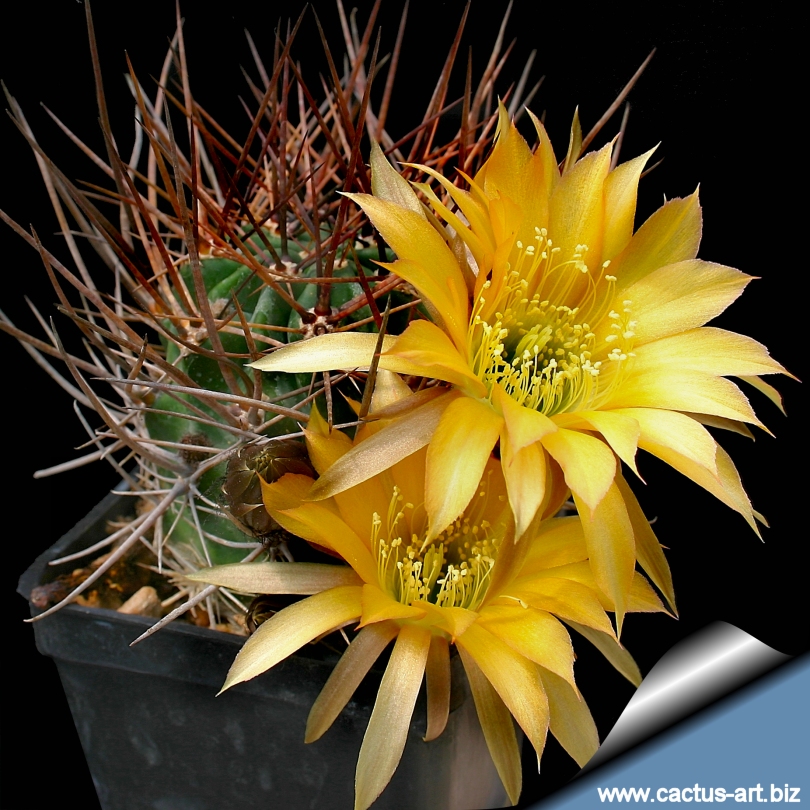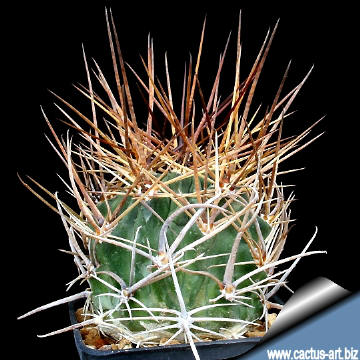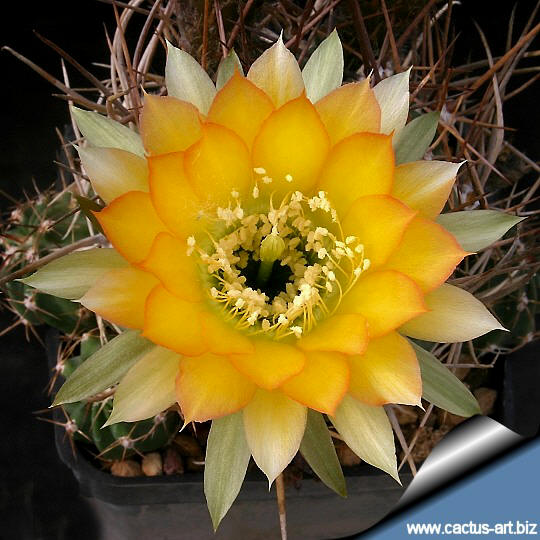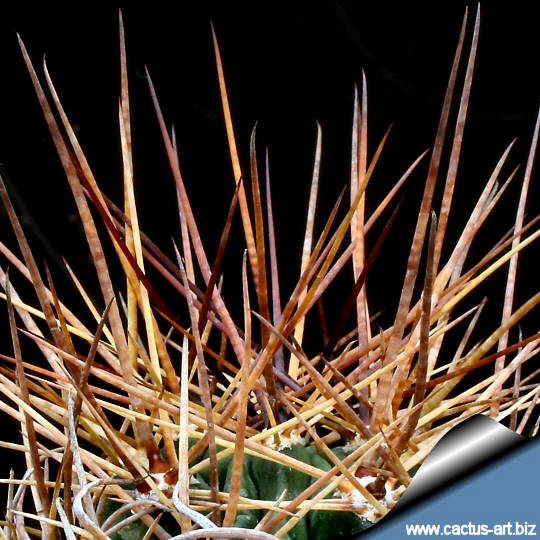|
|
|

Lobivia lateritia v kupperiana R673A Uyuni, Potosi, Bolivia
|
|
 |
Although Lobivia (Echinopsis) kupperiana
is a long known taxa, it is still rare in collections.
It belongs to the Echinopsis lateritia
complex that comprises a large number of infraspecific
taxa, differing in various combinations of flower colour, spine
colour, number and thickness of central spines, and other characters.
The taxonomic and geographic boundaries among the segregate species or
infraspecific taxa of E. lateritia remain nebulous and
controversial. In no place do pure populations exist
sympatrically, and all taxa appear completely interfertile.
Cultivation: It is a summer grower
species that offers no cultivation
difficulties. Water regularly in summer (but do not
overwater ) Needs a large pot to accommodate a large
root system. Use a very draining and porous substrate, keep rather dry in winter.
It is quite frost resistant if kept dry (hardy to -5° C)
Outside full sun or afternoon shade, inside needs bright light, and some
direct sun. |
|
Photo of
conspecific taxa, varieties, forms and cultivars
of plants belonging to the Lobivia
lateritia
complex
(This
Taxon has lots of synonyms
whit several controversial varieties and subspecies and comprises a
multitude of different forms, but where each form is linked to others by
populations of plants with intermediate characteristics):
|
|


Advertising
|
|
|
|
|
Family:
Cactaceae
(Cactus Family) |
|
Scientific name:
Lobivia kupperiana Backeb.
Conservation status: Listed in
CITES appendix 2.
|
Synonyms:
-
Echinopsis lateritia
Gürke
-
Lobivia lateritia
(Gürke) Britton & Rose
-
Lobivia camataquiensis
Cárdenas
-
Lobivia carminantha
Backeb.
-
Lobivia pentlandii
-
Hymenorebutia torreana
-
Hymenorebutia torataensis
-
Hymenorebutia cintiensis
-
Lobivia scopulina
-
Lobivia cintiensis
|
|
|
|

A selected specimen with beautiful flowers.
 |
|